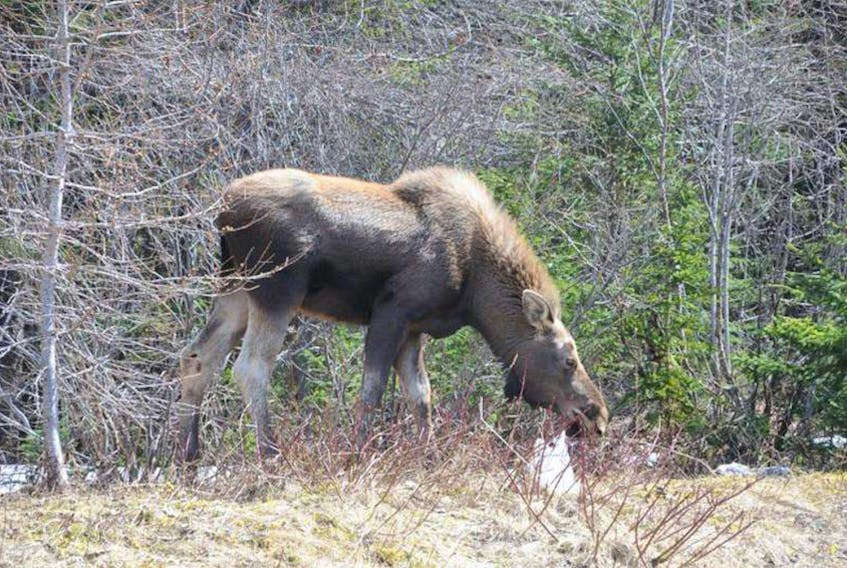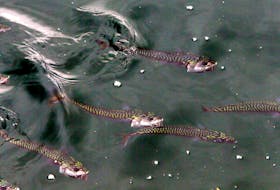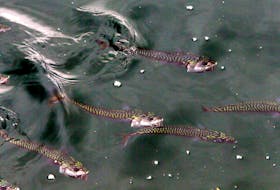The provincial government is reducing the overall moose quota for resident hunters to 29,260 for the 2018-19 big game season.
That’s a cut of 2,470 licences from last year.
The reduction is being made to address substantial declines in the moose population on the Northern Peninsula and eastern regions of the province, according to a joint news release from the departments of Fisheries and Land Resources, and Tourism, Culture Industry and Innovation issued today, Feb. 27.
The change is based on updated survey information for a number of moose management areas and significant declines in hunter success in others, the release indicated, adding the overall harvest rate will not be impacted to any large degree.
Competition between hunters for animals will be reduced and the hunter success rate is anticipated to increase slightly.
There will be no reduction for non-resident licences available to outfitters. To ensure the moose population is controlled along highways, the number of licences in moose reductions zones along the Trans-Canada Highway will also remain unchanged.
“The Newfoundland Hunters and Anglers Association and the Newfoundland and Labrador Outfitters Association both told us decreased quotas are needed, and we have acted on their recommendations,” Fisheries and Land Resources Gerry Byrne said.
A number of other changes are also being implemented:
- The closing date for moose in eastern moose management areas will be set to Dec. 31, 2018, creating a consistent closing date for the entire province;
- The overall caribou quotas will be reduced by 48, from 650 to 602;
- For non-residents, Caribou Management Area (CMA) 64 will see an increase of 21 licenses as a result of an improvement in the caribou population, and CMAs 61, 62, and 69 reduced by a combined 50 licenses, for an overall net reduction of 29 licenses;
- Resident caribou quotas will be reduced by 19 overall;
- A planned hunting closure of Caribou Management Area 69, commencing for the 2019-20 season, will be introduced and remain in effect until there is evidence of a recovery in caribou numbers; and
- Reinstatement of the Canid Collection Program.
The Department of Fisheries and Land Resources is planning to complete five to seven surveys annually to improve estimates of moose population size, the news released indicated.
The caribou quota reduction will occur primarily on the Northern Peninsula, where numbers have dropped by 52 per cent since the last survey. The St. Anthony herd, however, is stable.
The Canid Collection Program was brought back to address an emergent wolf population on the island portion of the province.
“The changes announced today are informed by science and reached in consultation with those who depend on moose and caribou for food, for their livelihood, and a means to practice cultural traditions that have been passed through generations,” Byrne said.
In applying caribou licences to non-residents, government has considered outfitter sales activity, package price and yield, marketing participation and adherence to the Tourism Assurance Program, the release noted.
The decision to take a one-year transition to the closure of Caribou Management Area 69 was made to offset economic implications for outfitters.
“The provincial government is committed to maintaining healthy and sustainable caribou and moose populations but also mindful of the economic benefits that outfitters provide to the province,” Tourism, Culture, Industry and Innovation Minister Christopher Mitchelmore said.
“Caribou allocations were made to ensure the sustainability of the caribou population, while also working to minimize negative economic impacts on outfitters and resident hunters. We believe this is a balanced approach to sharing the consequences of declining big game populations with both resident and non-resident hunters and protecting the population for the future.”
Meanwhile, changes to the provincial Wildlife Act and Regulations announced last fall to support inclusion, improve access and increase participation in hunting throughout the province will be in effect for the 2018-19 season.
They include lower minimum hunting ages, updates to the Program for Hunters and Anglers with a Disability, and earlier application dates for the provincial big game draw.
Big game licence applications for hunters eligible to participate in the provincial 2018 big game licence draw are now available online, while paper applications will arrive in the mail shortly.
This year’s deadline for receipt of big game licence draw applications is March 29 at 4:30 p.m. They can be submitted online at the Department of Fisheries and Land Resources website or returned by mail.









